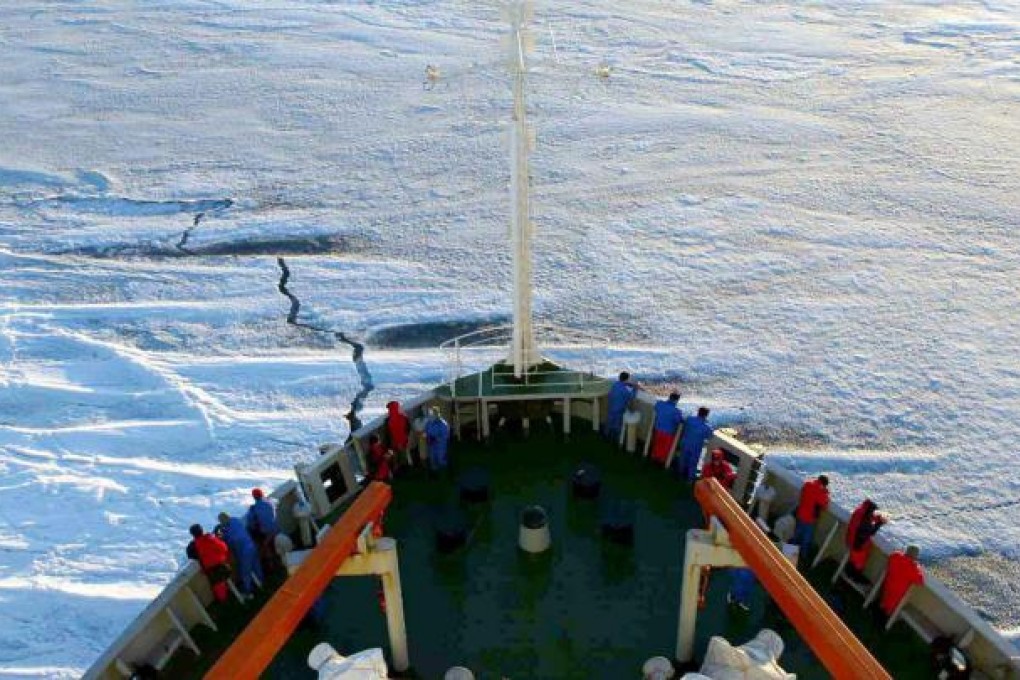China poles apart on missions to Arctic and Antarctic
Beijing's missions to the Antarctic have an economic motive, but those to the Arctic signal its concern about the consequences of climate change

A Hollywood blockbuster movie might have been responsible for Beijing's partial change of attitude to the North Pole.
Hitting cinemas in 2004, the American sci-fi disaster movie showed the deadly consequences of ice-melting in the Arctic with stunning visual effects.
The film was based on the theory that the melting ice, by changing the oceans' salinity, disrupted the North Atlantic's Gulf Stream current, triggering huge snow storms, among other disasters, that rampaged across the entire northern hemisphere and pushed the earth into a new ice age. According to Professor Qiao Fangli , deputy director of the First Research Institute of Oceanography under the State Oceanic Administration, state leaders watched the movie and asked scientists whether it could happen for real. The scientists told them it was possible within 50 years.
Eight years later, the scientific research icebreaker Xuelong returns to its home port in Qingdao , Shandong , late next month, marking the end of China's latest Arctic expedition. It is now in the Arctic Ocean.
The three-month voyage has racked up many achievements, including entry into unfamiliar waters and the deployment of China's largest research buoy in a faraway sea. But the mission's successes do not change China's long-term lack of interest in Arctic exploration. Beijing has sent 25 expeditions to the Antarctic but only five to the Arctic. The first Antarctic expeditions were carried out in the early 1980s, but the first voyage to the north had to wait until the late 1990s.
Xuelong, one of several vessels operated by the China Arctic and Antarctic Administration (CAA), has visited Antarctica almost every year since it was commissioned 20 years ago. It has headed to the Arctic at intervals of as long as four years.
